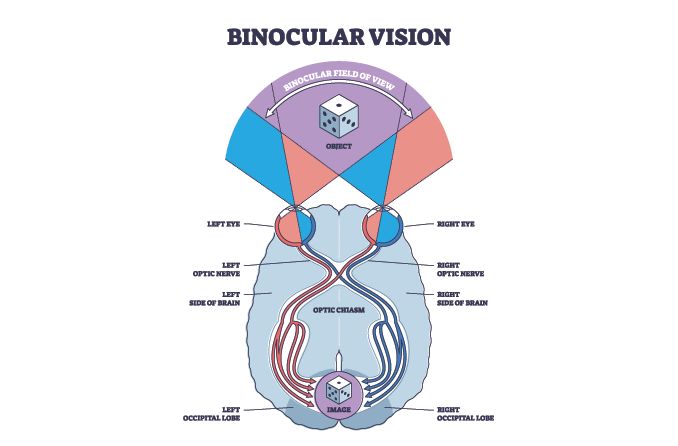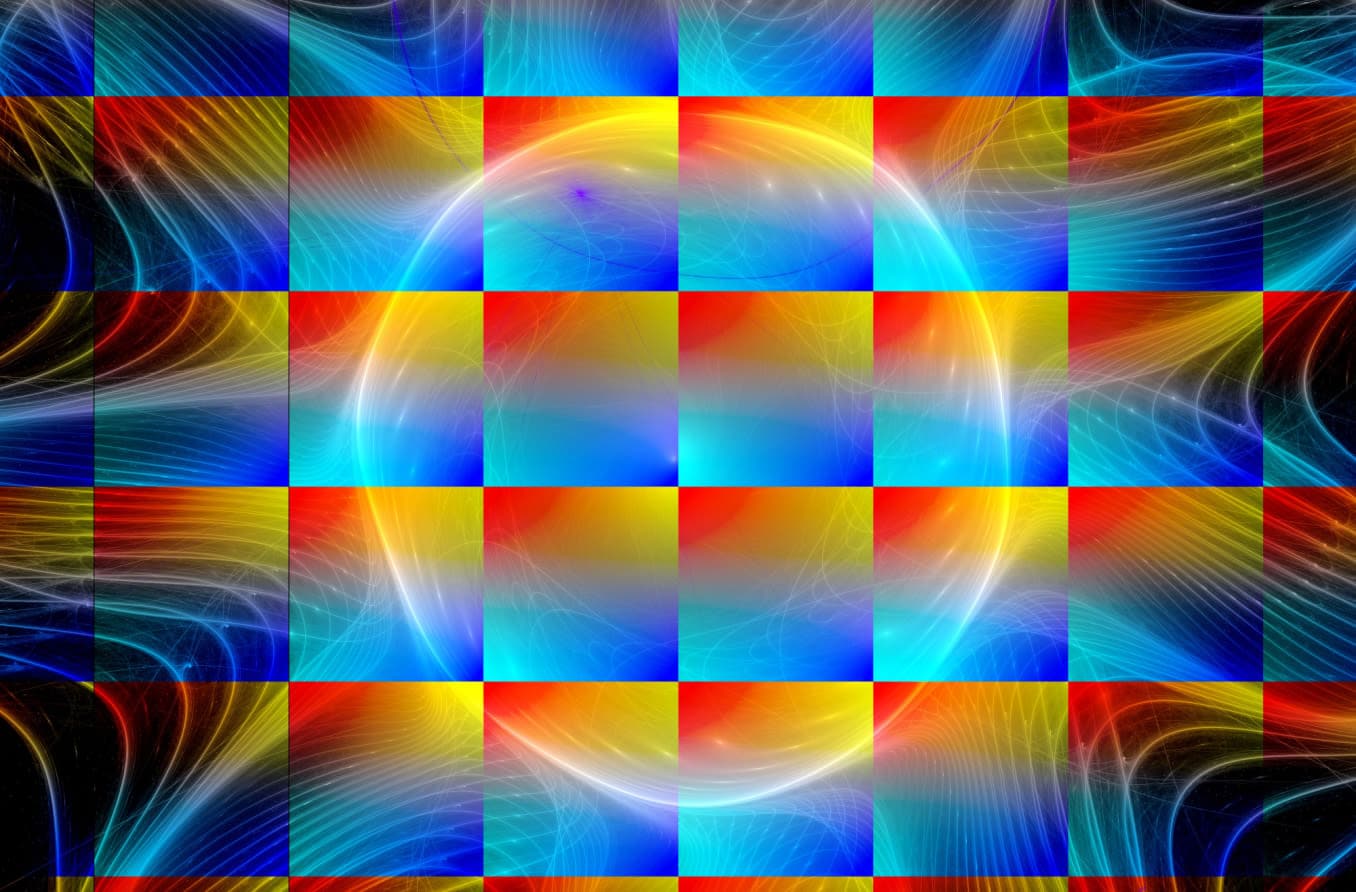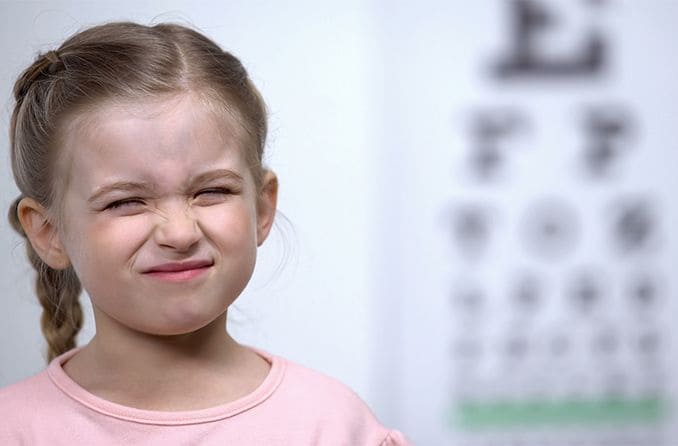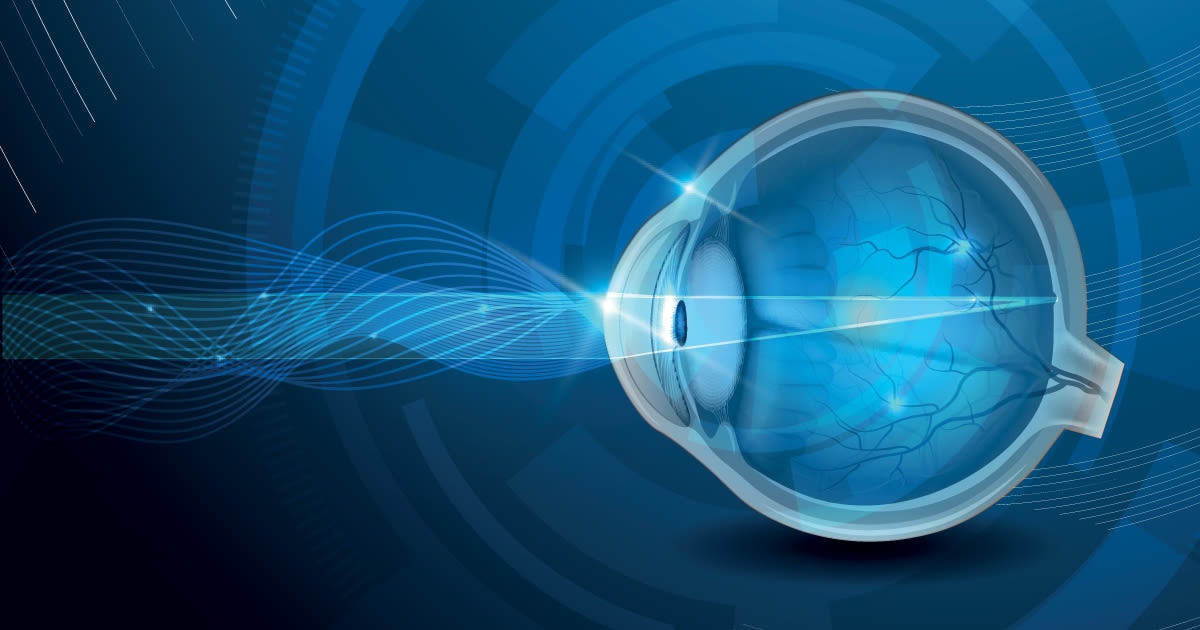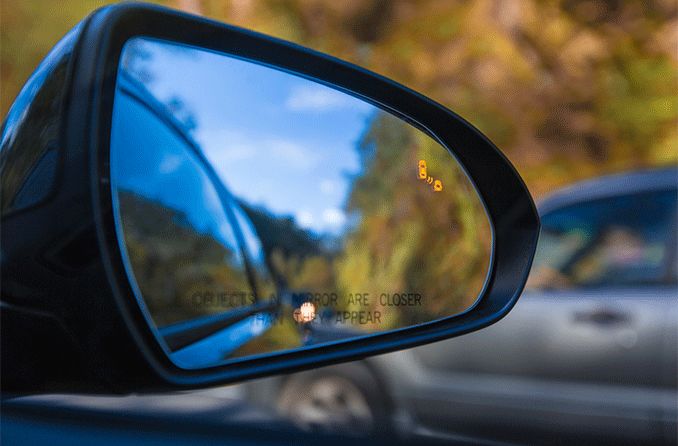What is eye teaming (binocular vision)?
Binocular vision, or eye teaming, describes the way the two eyes work together to integrate images seen by each eye into one image. (If you break down the word, “bi” means “two,” and “ocular” means “eyes.”) Both the left and right eye have their own line of vision.
In functional binocular vision, these two pathways fuse together to create a single, clear image. Eye teaming also provides for a wide field of vision and precise depth perception.
How does binocular vision work?
In binocular (two-eyed) vision, each eye receives an image of the object being viewed. This information is then sent to the brain, which compares and processes the different images into one single image.
A complete, single image is projected in front of you through this eye-to-brain communication. The development of binocular vision is an active learning process that takes place in the visual cortex of the brain.
Some people struggle with depth perception and eye alignment, which can cause a number of vision issues. This may result in eye coordination problems and conditions such as:
A person with strabismus has an eye misalignment. Some refer to this as a “crossed” eye. If strabismus is present, an eye may be deviated inward (esotropia), outward (exotropia) or vertically (hypertropia or hypotropia).
When the eyes are not properly aligned, the images of the object being viewed are dissimilar, and double vision happens. Strabismus may occur all of the time (constant strabismus) or some of the time (intermittent strabismus).
Constant strabismus means that the patient never has proper “eye teaming” or binocularity. In theory, this patient would see double all of the time. Intermittent strabismus means that a patient can have single vision when the eyes are teaming and double vision when they are not.
If eye misalignment occurs at a young age, the brain may choose to suppress or “turn off” an image. This suppression eliminates the double vision created by the strabismus. Strabismus and double vision create concerns that are both cosmetic and visual.
SEE RELATED: Eye exams for children: Why they're important
Binocular vision dysfunction (BVD)
The term binocular vision dysfunction describes additional problems with eye teaming. Some patients report double vision, and some notice headaches and eyestrain. Binocular vision dysfunction (BVD) can result from the two eyes struggling to maintain alignment.
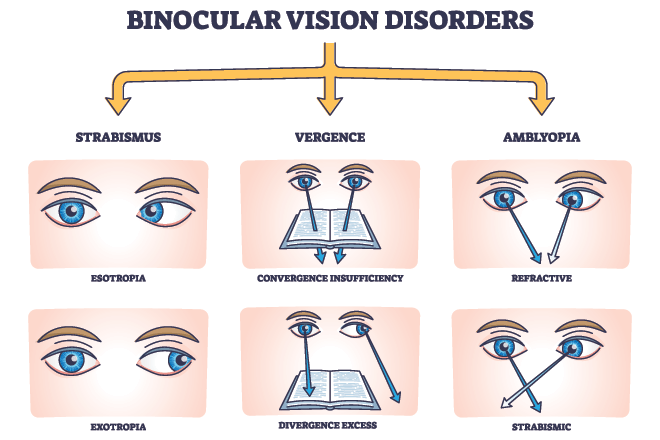
In today’s world of cell phones, tablets and computers, many experience the eye strain created by BVD. Some examples of common binocular vision problems include:
Convergence insufficiency, a horizontal eye teaming issue in which the eyes tend to point outward during near work.
Convergence excess, a horizontal eye teaming issue in which the eyes tend to point inward during near work.
The misalignment associated with BVD may be very obvious or it may be very subtle. The testing process for binocular vision dysfunction is very detailed and sensitive. The aim is to properly identify issues and determine a proper treatment plan.
Symptoms of binocular vision dysfunction
BVD can present with several different symptoms — some of which are not associated with vision. Many people with BVD also struggle with symptoms related to reading, driving, balance and mental health.
Be sure to take note if you experience one or more of the following:
Blurred vision
Double vision
Visual symptoms that worsen at the end of the day
Eyes turning inward or outward
Difficulty reading and writing, as words may seem to “swim” around the page
Feeling of fatigue during or after near work
Nausea
Vertigo
Trouble focusing while driving, as some stationary objects may appear to be moving
SEE RELATED: What part of the brain controls vision?
Binocular vision dysfunction and ADHD
Experts have discovered that BVD may present with similar symptoms to attention deficit hyperactivity disorder (ADHD). A child whose eyes are misaligned may have trouble concentrating, reading and writing. This is because it is physically difficult for them to do so. In school classrooms, excess visual stimulation can be more of a distraction than an enhancement to their education.
Adults may also struggle with similar symptoms while at work, driving or in various public spaces.
Since the symptoms of BVD and ADHD are so closely related, it’s important to have an eye exam to investigate the function of your binocular vision. A pair of glasses or additional treatments could make all the difference if the problem is vision related. (And don’t hesitate to also consult your primary care physician about ADHD symptoms.)
SEE RELATED: Vision problems can be misdiagnosed as ADHD or ADD
Causes of binocular vision dysfunction
There are a few main causes of BVD, including:
Environmental stress on the visual system
Trauma and traumatic brain injury (TBI), such as a stroke or concussion
Errors in vision development
Congenital causes
Diagnosis and treatment for binocular vision dysfunction
Before beginning treatment for BVD, your eye doctor will evaluate your entire visual system. The first step in any vision treatment is to correct refractive error. If a refractive error is present, glasses or contact lenses will be prescribed as the initial treatment. This includes myopia (nearsightedness), hyperopia (farsightedness) or astigmatism.
The eyes are checked very carefully as misalignment associated with BVD can be very obvious or very subtle.
The treatment options for BVD include:
Eyeglasses and/or contact lenses
Prism glasses (prisms built into eyeglass lenses)
Vision therapy, including eye teaming exercises
Every treatment has the goal of getting the eyes to work together in a more efficient manner and maintaining single, clear vision.
Eye teaming exercises for binocular vision dysfunction
Some patients are prescribed eye teaming exercises in order to improve the ability of both eyes to work well together. This treatment is often referred to as orthoptics or vision therapy.
Vision therapy is a doctor-prescribed program that includes a series of office visits. The goal of these visits is to improve the strength, flexibility and efficiency of the visual system.
Vision therapy is supported by ongoing clinical trials and evidence-based research. When binocular vision function is suboptimal, the eye teaming skills are poor. Vision therapy works with the concept of neuroplasticity to improve the ability of the eyes to work together.
Vision therapy retrains the brain and visual system to improve function. The goal of vision therapy is not to “strengthen eye muscles.” Instead, it works to integrate the brain and visual system to create clear, single, binocular vision.
READ MORE: What is (and isn't) vision therapy for children?
Monitor your vision with regular eye exams
It’s important to schedule a comprehensive eye exam once a year. The goal is to keep every aspect of your vision healthy and functional — including binocular vision.
If you notice any changes in your focusing abilities, contact your eye doctor immediately. This can include trouble reading or driving or any other symptoms that could point to a problem with your binocular vision.
READ NEXT: Visual perception: How it works & common disorders
